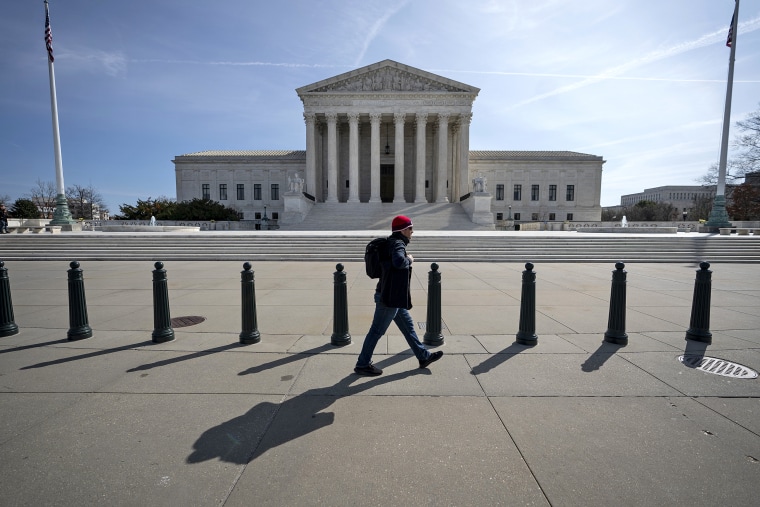WASHINGTON — The Supreme Court heads into the final months of a blockbuster term with no word on how it will hear the remainder of its docket or issue decisions on the cases already heard.
Eleven cases were to be argued in the court's ornate marble courtroom during the two-week period beginning March 23, including the legal dispute over President Donald Trump's efforts to shield his tax returns and other financial documents from three congressional committees and the Manhattan district attorney. The court postponed those arguments but has not yet said how they will be handled.
That announcement also cast a cloud over how the court will issue decisions, which are normally announced in court when the justices take the bench. It's possible the rulings will simply be distributed in paper form and posted on the website, www.supremecourt.gov, without the justices coming into the courtroom.
Many of the nation's local, state, and federal courts have postponed civil and criminal trials, and federal appeals courts are delaying oral argument.
Full coverage of the coronavirus outbreak
For the Supreme Court, abiding by the CDC rules to reduce social interaction helps protect the court staff and the justices themselves. All but three of them, Elena Kagan, Neil Gorsuch and Brett Kavanaugh, are 65 or over. And the court's oldest member, Ruth Bader Ginsburg, turned 87 this week.
Only two more weeks of oral argument are on the calendar, starting April 20, with nine cases on the docket for that session, which is scheduled to include a high-stakes battle over the future of the Electoral College, the system used to elect the president. The court must also soon decide whether to postpone arguments about the "faithless elector" — delegates to the electoral college who refuse to support the candidate they pledged to support.
The justices could simply decide some of the remaining cases without oral argument based on the extensive written briefs, something it does several times a year on the less controversial matters. It could also push other cases into its next term, which begins in October.
Tom Goldstein, a Washington lawyer who argues frequently before the court, predicts that the justices will hear only two of the term's remaining cases in the courtroom, involving Trump's finances and the Electoral College.
"There's a need to decide both of those cases this term, for the sake of Congress and the coming election," he said.
Download the NBC News app for full coverage and alerts about the coronavirus outbreak
He says they could be heard with only the justices and the arguing counsel present in the courtroom, but without the public or the several dozen members of the legal profession who show up to watch and be formally admitted to the Supreme Court bar.
The court will likely disclose Friday afternoon whether and how it will announce any new decisions. A total of 36 cases are pending, including some of the most important to reach the court in decades.
The most widely anticipated ruling will address these questions: Did the Trump administration act legally when it tried to the shut down the DACA program, which has allowed nearly 800,000 young people brought into the country illegally as children to avoid deportation and remain in the U.S.? Do existing federal civil rights law ban job discrimination against LGBT employees? And how much flexibility do states have to restrict access to abortion?
Other high-profile cases yet to be decided deal with freedom of religion and gun rights.
On Thursday, the court announced another change to is procedures, stretching out the time to file an appeal by adding two more months to the process and giving more time to the party that opposes having the court hear a case on appeal.

